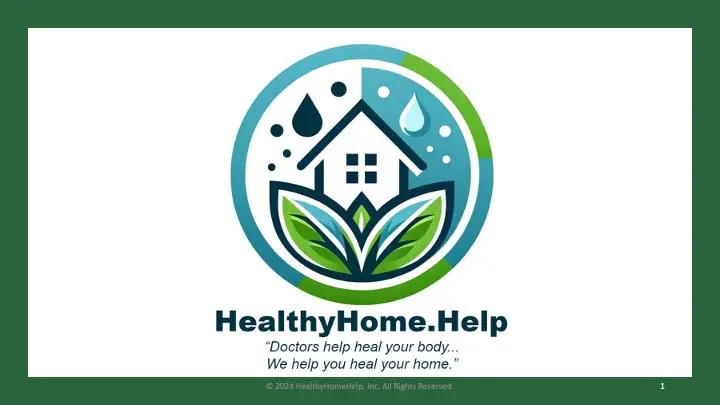THE TOTAL ENVIRONMENTAL PICTURE – MORE THAN JUST MOLD

Creating a healthy indoor environment encompasses a broad scope of considerations beyond the commonly discussed issue of mold. A comprehensive approach to maintaining a healthy home involves understanding and mitigating a variety of potential contaminants:
- Broad Range of Biological Contaminants: Homes can be affected by an array of biological pollutants such as mold spores, bacteria, and viruses, as well as allergens from house dust mites, cockroaches, and other pests. These organisms can release byproducts like mycotoxins, microbial volatile organic compounds (MVOCs), and fungal glucans that can impact health.
- Chemical Exposures: Indoor air often contains volatile organic compounds (VOCs) emitted from everyday household products such as paints, cleaners, and air fresheners. Formaldehyde, a common VOC, is found in many building materials and furniture. Additionally, semi-volatile organic compounds (SVOCs) are present in pesticides, plasticizers, and flame retardants and can accumulate over time from various sources.
- Inhalable Particles: The presence of fine particulate matter from sources like smoke, combustion, and environmental dust can have significant respiratory and systemic health effects.
- Heavy Metals and Asbestos: Older buildings may contain lead, asbestos, or other hazardous materials that require careful management to prevent exposure, particularly during renovations or repairs.
- Inert Gases and Indoor Air Quality: Ensuring good air quality involves monitoring and managing levels of radon, a naturally occurring radioactive gas, as well as maintaining safe levels of carbon monoxide and carbon dioxide through proper ventilation.
Addressing these issues often involves regular home maintenance, choosing low-emission products, and sometimes more in-depth interventions like professional remediation. Additionally, employing strategies to maintain clean air and water in the home, such as using air purifiers with HEPA filters and water filtration systems, can be crucial steps in safeguarding health. Regular testing of the home environment for various contaminants can also help in preventing potential health issues before they arise.

